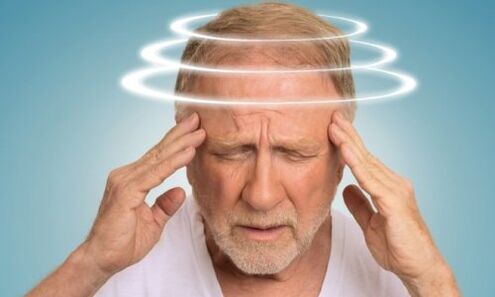Experts call the prostate gland the most sensitive organ in men. The most common inflammation of the prostate, the patient is a lot of trouble. If the inflammatory process lasts more than 3 months, we can talk about a chronic form of the disease. The problem of how to treat chronic prostatitis is faced by every third member of the stronger sex. It is possible to treat the disease, but it requires qualified medical care. You should not delay the complex treatment of a chronic disease, as it leads to the appearance of adenomas and prostate hyperplasia, as well as a decrease in erectile function.

What is meant by diagnosis?
Men are usually reluctant to listen to their well-being, so the inflammatory process in the prostate gland takes a protracted form. The danger of the disease is that it can be completely asymptomatic. First, urethritis develops, and if you do not consult a doctor, complications can not be avoided. Over time, men develop chronic prostatitis, the symptoms and treatment of which are individual. Forms of chronic prostatitis:
| ad | Diagnostics |
|---|---|
| contagious | Occurs as a result of damage to the prostate gland by viruses, fungi or bacteria. Detected by laboratory analysis of blood and urine. |
| stagnant | It continues with pain in the pelvic region, often chronic. The symptoms of the congestive form sometimes resemble the symptoms of the inflammatory process. |
| Asymptomatic | There are no clinical manifestations of inflammation, so a man can not see a doctor for a long time. The disease can be diagnosed only by examination of the prostate gland. |
Many men are diagnosed with congestive chronic prostatitis (non-infectious etiology). In this case, the inflammation affects the secretions of the prostate and blood vessels.
Reasons for appearance
The causes of chronic prostatitis are different:
- prolonged abstinence from intimacy or very active sexual life;
- Presence of several perineal injuries (while riding a horse or cycling);
- Irrational menu (lack of nutrients and excess of fried, fatty and smoked foods);
- re-infection of the genitals;
- Decreased immunity;
- diseases of the genitourinary system;
- sedentary and sedentary lifestyle;
- Very tight and tight underwear;
- Cessation of sexual intercourse;
- Phimosis in history;
- Anal sex without additional protection (condoms).
The disease affects both the elderly and middle-aged and even young men:
- In inactive sex, prostatitis occurs due to stagnation of prostate secretion.
- Athletes are at risk because they lift weights and are prone to microtrauma of prostate tissue.
- Drivers of long-distance flights suffer from pelvic blood stasis.
- Winter fishing enthusiasts are at risk due to constant hypothermia of the body.
Chronic prostatitis is about 20% of all male diseases. One in five patients who see a doctor suffers from a chronic form of the disease. The disease is "rejuvenating" because modern children do not think about their safety. In order not to be confused about how to get rid of chronic prostatitis, it is enough to pay attention to the basic protection against sexually transmitted diseases.

It is worth considering that the chronic form of the disease leads to an erection of the penis and a decrease in sexual satisfaction during ejaculation. On this basis, fear of intimacy, nervousness, self-doubt begin. All this leads to neuroses, mostly on the basis of sex.
Ways of infection
Doctors point to two ways to become infected with an infectious form of prostatitis:
- Urinogenic (increasing). Special microorganisms enter the prostate through the urethra. The secretion of the prostate gland is normally sterile, the examination will not reveal any bacteria. There are cases when microorganisms live in a person's body, but their concentration is not enough for the development of the disease. In case of disruption of the microflora, infection of the body begins, which leads to the development of inflammation. When a man suffers from hemorrhoids or cystitis, do not rule out the risk of infection and damage to neighboring organs. In this case, dangerous microorganisms enter the prostate through the lymphogenous route.
- Hematogen. The causative agent enters the prostate through the bloodstream. There are various diseases that can cause this type of infection: acute influenza, caries, etc. In parallel, if there is venous obstruction in the prostate gland, the risk of chronic prostatitis is high, and its treatment will take a long time.
Urologists identify two predisposing factors that cause hematogenous infection:
- birthAnatomical features of the prostate, including changes in the structure of muscle tissue or disorders of the circulatory system.
- Received. Causes of chronic prostatitis include genital damage, alcohol cravings, prolonged smoking, a history of infectious diseases, and frequent hypothermia.
The danger of ignoring the disease is that at this stage, the symptoms of chronic prostatitis in men are often absent or insignificant. The patient believes that the disease can be treated with folk remedies, but these methods are ineffective. Treatment regimens are performed by a specialist only after a thorough examination and collection of the necessary information.
Warning Signs
The symptoms of chronic prostatitis vary depending on the stage and form of the disease:
| Form | symptoms |
|---|---|
| Bacterial (infectious) | Feeling of weakness, chills, fever, muscle aches, pain in the lower abdomen (may be aggravated by discipline and prolonged incontinence), pain when urinating, weak reactive pressure when urinating, frequent urination at night. Pain may be observed in the thigh, perineum, and rectum, so the symptoms of chronic prostatitis are confused with hemorrhoids. |
| Bacterial specific | All of the above symptoms are observed, to which may be added mucus-like discharge from the urethra. |
| bacterial | It is difficult to ignore the symptoms of congestive prostatitis due to severe pain. Localized in the perineum and bud. There is discomfort in the head of the penis. The pain is exacerbated by the cessation of sexual intercourse, as well as prolonged abstinence from intimacy. |
Outcomes of chronic prostatitis depend on the duration of the disease:
- adenoma;
- Oncology;
- Prostate sclerosis and bladder neck;
- Erectile dysfunction;
- infertility;
- Decreased testosterone levels.
The danger of the disease is not only that prostatitis can be mixed with another disease. If the acute phase passes, the symptoms of chronic prostatitis disappear and there is no treatment. The man is no longer worried about his health and does not go to the doctor. However, there comes a time when the symptoms begin to seriously irritate and interfere with normal life, but the disease has already reached a protracted stage. If the disease is not diagnosed at an early stage, treatment of congestive prostatitis will take longer.

Diagnosis
The symptoms of other diseases are very similar to the symptoms of chronic prostatitis. Is it possible to treat the disease without examinations? This is not possible, because only an accurate diagnosis will determine the form and stage of development of prostatitis. May cause concern:
- tuberculosis;
- adenoma;
- Swelling.
Only a thorough examination can confirm or rule out the diagnosis. There are two types of research:
- instrumental;
- Laboratory.
After talking to the patient and taking a medical history, the urologist or andrologist will ask you to perform a series of tests:
- General urinalysis;
- General blood test;
- analysis of prostate secretion;
- Blood test for PSA.
A urine sample is taken three times to obtain more accurate information about the change in composition:
- epithelial cells;
- Leukocytes;
- pathogenic pathogens of infections;
- Non-specific bacteria.
Doctors know what chronic prostatitis is and how difficult it is to diagnose. The modern method of transrectal ultrasound (TRUS) allows you to do this precisely:
- A device with an ultrasound probe is carefully inserted into the patient's anus.
- Because the prostate is firmly attached to the wall of the rectum, the specialist has a good opportunity to study the prostate gland in detail and make an accurate diagnosis.
Conventional ultrasound allows you to determine changes in the density of the prostate, its size, the presence of fibrous foci, abscesses and stones.
Before treating chronic prostatitis, the doctor should double check the diagnosis. In the slightest suspicion, the patient may be referred for an MRI or CT scan to rule out the presence of a tumor focus. If a man has an infravesical obstruction, an x-ray is needed to determine the cause of the disease.
Conservative treatment methods

The treatment regimen for chronic prostatitis is prescribed only by a professional urologist and is selected individually. The doctor takes into account the cause of the disease, the duration of the disease and a factor such as aggravating pathology. If congestive or infectious prostatitis is in the early stages, treatment can be with medication:
- Antibiotic therapy. Prostatitis is treated with antibacterial drugs if a bacterial agent is found in the prostate secretion or urine. Inflammation should be pronounced. The course does not last more than 2 months, and the cost of treatment of chronic prostatitis depends on the prescribed medication. The dose of each drug is determined individually and self-medication is fraught with complications. Feedback after treatment of prostatitis with antibiotics is not always positive, but there are reasons for this. Sometimes the infection is defeated, but symptoms persist at the end of the course.
- Elimination of symptoms. In men, painkillers are often used to treat chronic prostatitis. The course of therapy may also include the use of antidepressants to reduce anxiety levels.
- Alpha blockers. If the doctor diagnoses hypertonicity of the muscles of the bladder or an increase in intraurethral pressure, a course of these drugs is prescribed. However, if the patient has pelvic myodystrophy or impaired muscle innervation, the drug is ineffective.
- hormone therapy. It is performed based on the results of hormonal examination. Androgens and antiandrogens are used.
- Vitamin therapy. With irrational nutrition, the deficiency of nutrients is compensated by the vitamin-mineral complex. Experts do not recommend replacing it with popular dietary supplements, because "dummies" will not help in any way.
- Normalization of uric acid levels. Regulatory prostatitis treatment is effective only if there are stones in the prostate gland.
- Immunostimulants. Prostatitis is treated with this method only with laboratory-confirmed immunodeficiency.
Answering the question of whether chronic prostatitis can be treated, we can say with confidence that recovery occurs quickly with a well-defined complex.
Operative treatment method
The disease usually does not require surgery, except that the complication may endanger the patient's health and even life. Modern surgery uses endoscopic intervention to reduce health risks and losses. Surgery is invaluable for:
- adenoma;
- Sclerosis of the seminal tubercle;
- Prostate stones;
- Prostate sclerosis.
Effective treatment of chronic prostatitis allows a man to do without surgery if he sees a doctor in time. Remember that surgery cannot be performed during the exacerbation of the disease. The need for such a cardinal treatment is determined by the surgeon only after studying the general clinical picture.
Other treatments
Men are often worried that chronic prostatitis can be treated without medication. The doctor may actually prescribe other methods:
- Massage. Contraindications and keep in mind that only a small area of the prostate is available for massage. If there are hyperplastic changes in the prostate gland, a course of massage can cause acute urinary retention. This, in turn, leads to further spread of inflammation and the development of sepsis. Massage is also prohibited in the presence of venous stasis, prostate cysts and stones in the prostate gland. If you need to get rid of a stagnant secretion, it is better to release the prostate naturally through ejaculation.
- Special gymnastics. It is used to strengthen the bladder and prolong the intervals between urination. Improving the tone of the sphincter and bladder allows you to set a break of up to 5 hours between calls to the toilet. Gymnastics is ineffective for neurodystrophic changes and myofascial syndrome.
- Muscle stimulation. Magnetic therapy, phonophoresis, transrectal ultrasound, or electrical stimulation are used to reduce pelvic floor muscle tone.
- Dripping. It is practically not used in modern medicine, because the infusion of drugs into the urethra is accompanied by pain and does not cure prostatitis. The consequences of such treatment can be catastrophic.
It is better to ask an andrologist or urologist how to treat congestive prostatitis with folk remedies. Popular videos on the Internet are full of videos about the quality use of alcohol tinctures and pumpkin seeds, but no method can replace drug treatment. Only the doctor, not the heroes on YouTube, determines how much the disease is treated.
Useful exercises
A simple set of exercises will improve blood microcirculation in the pelvic region. They can be performed in the morning instead of the usual workout:
- Separate your legs from shoulder width apart, raise your arms, and join them to the back of your head. Breathe - sit slowly and bend your knees to the sides, breathe - return to starting position.
- Tie your legs together and lower your arms freely across your body. Bend your left leg at the knee and lift it as high as possible. Repeat the same thing with your right foot. Perform 10 approaches.
- Squat, lower your palms. Breathe - stand up slowly, spread your arms to the sides. Breathe - return to starting position.
- Lie on your stomach, after placing a small ball (not larger than a tennis ball) under it. Focus on the ground and roll the ball with your stomach. Perform 7 approaches.
- Lie on your back with your knees bent. Squeeze the ball between them. Breathe - squeeze your knees, breathe - relax. Do 3 sets, increasing the number of repetitions to 9 times.
- Sit on the floor, paying attention to your hands. Put a ball under your breasts. With the help of the floor and genitals, try to roll it to the ground.
Help fight diseases and Kegel exercises that are useful not only for women but also for men.
Probability Forecasts
Instead of looking for information on how to live with chronic prostatitis, it is better to make an appointment with a specialist. You can improve your health by seeing a doctor on time and with a well-chosen course of therapy. The question of whether chronic prostatitis can be completely cured cannot be answered unequivocally. It all depends on what methods the doctor prescribes and how accurately the patient follows his recommendations.
Experts are very careful in making predictions about the further course of the disease. Is chronic prostatitis guaranteed? Complete recovery was noted only in rare cases, as in most cases the disease takes the form of long-term remission. Normalization of urine and blood parameters is noted, symptoms disappear completely. However, without following a doctor's advice, the disease can again cause anxiety and complications.



























